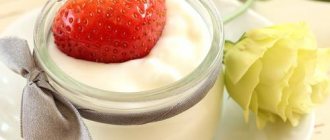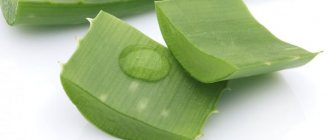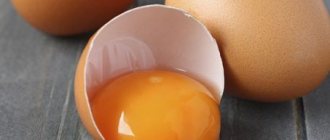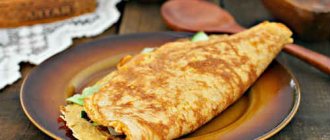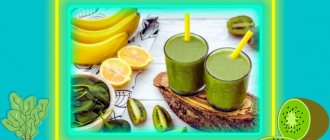Origin story
The history of the delicacy, which children and adults adore so much, goes back thousands of years. In ancient Greek myth-making: “Zephyr is the powerful god of the wind, who gave people the recipe for one of the greatest delicacies of all times.”
According to another popular version, the authors are the eastern peoples, who prepared it at the dawn of our era along with Turkish delight and nougat.
There is also a theory that attributes the role of the discoverers of the airy dessert to the inhabitants of Ancient Rus'. To make delicacies, our ancestors used apples of special sour varieties, such as “Antonovka” and others.
The French, in turn, consider the author of the recipe to be the personal chef of the monarch Louis XII, who received the nickname “father of the people.”
Harm to the body
In general, marshmallows are not harmful to anyone. Usually, colored food can cause an allergic reaction due to the presence of artificial dyes in it. Therefore, people who have allergies or digestive problems are better off choosing white without additives.
Desserts made with fructose are produced for diabetic patients. They are not allowed with sugar due to the risk of raising blood sugar levels.
Consumption should be limited to those who are overweight. If you are obese, be sure to consult your doctor and nutritionist.
Varieties
It is not easy to completely reproduce ancient recipes, so in modern realities, gelatin is used in the production of industrial marshmallows, and pectin and agar-agar are used as an alternative. Thanks to the addition of one of the listed components, the delicacy manages to acquire a consistency and appearance familiar to consumers, which do not change over many years.
- Gelatin is obtained by prolonged boiling of tendons, bones, cartilage and pieces of pork skin. As a result, collagen is transformed into glutin. It is evaporated to form a jelly, crushed and dried.
- Pectin is produced using acid extraction from apple fruits, sunflower seeds, citrus fruits and some varieties of beets. The advantage for weight watchers is that it is calorie-free and can be eaten without the risk of gaining extra pounds.
- Agar-agar, unlike gelatin, for which it is in fact a substitute, is of plant origin. It is obtained directly from brown and red algae through an extraction process. Thanks to this jelly-like substance, vegetarians can enjoy the taste of marshmallows without violating their own principles.
Frutilade: all tastes and types.
Fructose - features of fruit sugar
Fructose is a natural saccharide that is present in berries, fruits, sweet vegetables and belongs to the group of monosaccharides. A feature of the substance is considered to be rapid decomposition with very slow absorption. Fructose is 2 times sweeter than traditional sugar, so when using it, the desired effect is achieved in a significantly smaller amount in the composition.
In addition to the listed qualities, fructose has the following advantages:
- low calorie content; — naturalness; - Possibility of use by patients with diabetes mellitus; - no negative impact on tooth enamel.
Thanks to all these qualities, fructose-based products and sweets - marshmallows, candies, marmalade, and baked goods - are becoming increasingly common. This is facilitated by the identical taste of the substance, which does not differ from the taste of standard sugar.
Composition and calorie content
The classic recipe requires the following ingredients:
- berry and fruit puree;
- egg white;
- sugar;
- thickener (gelatin, pectin or agar-agar).
The components are thoroughly beaten and turned into a homogeneous mass.
Today, it is incredibly difficult to find marshmallows prepared according to a traditional recipe on the shelves of regular stores. Most manufacturers, in order to reduce the cost of production, add various preservatives, dyes, stabilizers, acidity regulators and other not very useful substances to the composition of the treat.
The product contains almost no proteins and fats, but at the same time it is a fairly high-calorie product. 100 g contains approximately 333 kcal.
The wonderful benefits of oatmeal cookies.
What is marshmallow and what is it made from?
Marshmallow is a favorite sweet for many. And initially at home it was prepared a little differently than it is now. The closest relative is marshmallow. It was the beginning of the delicacy and was made from sugar and applesauce. Later it included various kinds of additives. The classic look consists of two white or pink hemispheres glued together. The taste of a homemade classic product differs from a factory product, which is due to the large number of available nutritional supplements.
Traditionally, the composition contains water, sugar, citric acid and gelatin. Such sweetness will not cause harm and will only be beneficial in moderation. Depending on the desired taste, raspberry, apple, cherry and other purees are added to it. In production, sweetness is obtained by grinding protein with sugar and puree, adding pectin, agar-agar or gelatin. Marshmallows on agar-agar are more beneficial. The sweetness is also sold in chocolate, in which case other ingredients are added. And the calorie content will be slightly higher.
Why is it useful?
The beneficial properties of marshmallow directly depend on its composition and especially on the gelling components.
Since it is subjected to heat treatment during the cooking process, a significant part of the vitamins is destroyed. However, the delicacy, made from natural applesauce (pectin), is rich in minerals such as phosphorus, potassium, iron, magnesium and calcium. This marshmallow has a preventive effect on the entire body and reduces the amount of cholesterol.
Agar-agar accelerates the elimination of toxins and harmful deposits, absorbs some fats, improves the functioning of the gastrointestinal tract, fights pathogenic microflora and bacteria - causative agents of ulcers and other diseases of the digestive tract. It is not for nothing that the Japanese, who are known to be a nation of long-livers, include agar-agar in their daily diet. In addition, this gelling product, like most seaweeds, contains iodine, which is beneficial for the thyroid gland.
If pectin and agar-agar are natural food additives that have certain benefits for the body, then with gelatin everything is not so clear. According to the results of biochemical studies, hormones and antibiotics that enter the body during intensive livestock farming can accumulate in the bones and cartilage of animals.
Now it’s clear why many weight-conscious sweet lovers choose plant-based marshmallows.
How is marmalade useful and what is harmful?
Which is healthier: marshmallows or marshmallows?
Marshmallows and marshmallows are healthy. However, they have many benefits mainly when prepared at home. But manufacturers skimp on natural products, adding chemicals. To choose between marshmallows and marshmallows, you need to proceed from their composition. There is more sugar in marshmallows and thickener in marshmallows. For those losing weight, it is definitely better to choose marshmallows.
For women
- Marshmallow is of interest to women because it contains virtually no fat. You can eat one half a day during fasting days and while following a strict diet aimed at rapid weight loss.
- According to many nutritionists, marshmallows have a positive effect on pregnant and lactating women, as they contain iodine and other valuable microelements in sufficient quantities.
Of course, if you are overly enthusiastic about such sweets, you can gain a few extra pounds, so you should not abuse them.
Recommended Products
Let's see what marshmallows you can add to your diet if you are on a diet or eating right:
Marshmallows “Sweet Stories” for any flavor.
Fortunately, for all lovers of the Udarnitsa factory and marshmallows called Sharmel, we can say that their products are perfect for diet and proper nutrition. And chocolate covered marshmallows too.
Is it possible to have marshmallows with a diet and proper nutrition? Yes, if it's pastille from Charmel . This product has a good composition and resembles marshmallows.
Harm and side effects
Because marshmallows usually contain sugar, they should not be consumed by diabetics.
If the harm of traditional sweets prepared according to a classic recipe has minimal negative consequences for the body, then marshmallows with additives can cause an unpredictable reaction.
If you are hypersensitive to certain components or have a food allergy, you should try such confectionery products with extreme caution.
Since the calorie content of marshmallows exceeds 300 kcal per 100 g, a passion for this delicacy can negatively affect your figure. The most harmful, from a dietary point of view, are considered to be sweets covered with icing, chocolate or coconut.
Is it possible to have marshmallows during pregnancy and breastfeeding?
Pregnancy and breastfeeding is a period when a woman’s taste preferences change, she needs minerals and other elements for the normal development of the child. But for his health, his diet has to be limited. Nutritionists not only do not prohibit marshmallows during pregnancy, but also strongly recommend consuming them. In moderate quantities, the product will have a positive effect on the body.
Attention! This is a healthy sweet, but even it should not be abused. For the expectant mother and child, both underweight and overweight are dangerous, so you need to monitor the caloric content of your diet.
Sweets contain a lot of fructose, which helps the brain work better and a woman not experience terrible headaches. And carbohydrates can be responsible for the “joy” hormone, which helps a woman tune in to an upcoming event or overcome postpartum stress or depression. Keeping track of your weight with such sweetness is much easier than with chocolate.
Marshmallows are not prohibited during breastfeeding. But this delicacy is introduced gradually and carefully, monitoring the baby’s reaction. It is advisable to abstain from it in the first two months. Pediatricians recommend filling your breakfast with marshmallows. Optimally - 3 pieces per week, after an allergy to this product has been ruled out. Sweet milk can not only negatively affect the baby’s digestive system, but also make him thirsty.
Don't forget about choosing a treat. Marshmallows with the least amount of additives will bring benefits. This is what an ordinary white dessert can boast of. It does not contain dyes or other additives that will harm the baby. Chocolate, nuts, coconut shavings are also undesirable when breastfeeding.
How to choose
When choosing marshmallows in a store, you need to familiarize yourself with its composition. But you shouldn’t forget about appearance.
Almost all modern products that have an attractive pink, yellow or pistachio color usually contain a whole group of harmful dyes. But dyes can also be found in the composition of white marshmallows. It is strictly not recommended to buy such sweets. Most likely, the manufacturer tried to hide from the consumer a not-so-pleasant shade or poor consistency. On the other hand, marshmallows with a grayish tint are unlikely to be safe for health or tasty, so tasting them is strongly discouraged. Choose delicacies made according to GOST, and not according to TU or some other quality standards.
The consistency of the delicacy is also important. When lightly pressed, the marshmallow should regain its original shape. If the confectionery product sticks together or falls apart at the first touch, you should definitely not purchase it.
Are store-bought curds harmful?
The benefits of marshmallows for children
Many parents monitor the portions of sweets their child consumes. Worry is caused by the condition of the teeth. But marshmallows are not only harmless, but also healthy for children. Nutritionists strongly recommend consuming it as a snack. Especially in the first half of the day.
Marshmallows will give your child a big boost of energy and improve brain activity. Therefore, it is especially useful for schoolchildren. However, with great mental activity, carbohydrates quickly “evaporate”; it would be right to give the child a treat with him. Such a snack will be beneficial not only before a test, but also after physical exercise, as it perfectly restores strength and satisfies the feeling of hunger.
Homemade recipe
To prepare marshmallows close to the classic recipe, you will need:
- 700 g sugar;
- 150 ml water;
- white of one egg;
- 4 sour and fairly large apples;
- vanillin to taste;
- powdered sugar;
- agar-agar (8 g).
Cooking method:
- Core the apples and cut them in half.
- Bake the fruits in the oven and let cool slightly.
- Separate the fruit pulp from the skin, put it in a blender and grind as thoroughly as possible.
- Add vanillin and about 250 g of sugar to the resulting mass. Mix it all well again and leave it in the kitchen until it cools completely.
- Pour water into a separate enamel container, add agar-agar and bring to a boil with constant stirring. After the water boils, add the remaining sugar.
- Boil the syrup for several minutes until it acquires a viscous consistency like melted caramel.
- Remove the container from the stove, add apple puree to it and whisk the whole mass thoroughly.
- From this mass, using a pastry syringe, form small “curls” on a baking sheet previously covered with parchment.
- Sprinkle with powdered sugar and leave the marshmallows to dry completely for one day.
- After 24 hours, glue the halves together and place the finished products in a dry, airtight food container.
How to make marshmallows at home
Do-it-yourself marshmallows made at home will bring more benefits to the body. It contains no additional additives. You can control the quality of the ingredients yourself.
What you will need:
- 250 grams of apple puree.
- 450 grams of sugar.
- 9 grams of agar-agar.
- 150 milliliters of water.
- 1 protein.
The puree is boiled to such a density that it does not flow out of the spoon. You can bake fresh apples, then cut them to let the juice flow out. The seeds and the entire core of the fruit are removed and then rubbed through a sieve.
Attention! You can evaporate the puree in a frying pan. This way things will go faster.
Agar-agar is poured with water and left for 10 minutes, then sugar is poured in and brought to a boil over heat. After boiling begins, reduce the heat and leave the syrup for another 5 minutes. When ready, it drips off the spoon like honey.
